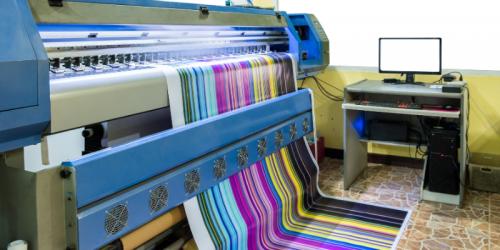Is DTF as Good as Screen Printing?

Screen printing has reigned supreme for many years. However, with the introduction of DTF, it's essential to evaluate whether this new method can match the quality, durability, versatility, and cost-effectiveness of screen printing.
Understanding Screen Printing
Screen printing is a traditional technique that involves creating a stencil, or screen, and then pushing ink through it onto the printing surface. It is known for its excellent color vibrancy and longevity. Screen printing is commonly used for large print runs and designs with few colors.
Introducing Direct-to-Film (DTF)
DTF is a digital printing method that utilizes a specialized printer to directly transfer the design onto a film. The film is then applied to the target surface using a heat press, where the ink adheres and forms a permanent bond. DTF is known for its ability to produce intricate designs with vibrant colors.
Quality Comparison
Color Vibrancy and Detail
Screen printing has a reputation for vibrant and opaque colors. It can achieve excellent color saturation, especially when using spot colors. On the other hand, DTF offers comparable vibrancy and can even reproduce more intricate details due to its digital nature.
Color Options
Screen printing allows for precise color matching, making it ideal for projects that require specific shades or Pantone colors. DTF, being a digital process, offers a broader color spectrum and the ability to reproduce gradients and complex designs more accurately.
Fade Resistance
Both screen printing and DTF can provide good fade resistance when using high-quality inks. However, screen printing's longevity is often considered superior, especially when subjected to harsh washing or prolonged exposure to sunlight.
Durability Evaluation
Washing and Care
Screen printing exhibits excellent durability when it comes to regular washing and care. The prints can withstand numerous machine washes without significant fading or cracking. DTF, while generally durable, may require extra caution during washing, especially with delicate fabrics.
Stretch and Cracking
Screen printing inks have inherent elasticity, making them suitable for stretchable fabrics. They can withstand stretching without cracking or losing color integrity. DTF, on the other hand, may be prone to cracking if applied to highly elastic materials, compromising its durability.
Versatility Considerations
Fabric Types
Screen printing is compatible with a wide range of fabric types, including cotton, polyester, blends, and more. It adheres well to both light and dark fabrics, providing a consistent and vibrant result. DTF, on the other hand, can be applied to various fabric types but may perform better on lighter-colored materials.
Surface Compatibility
While screen printing is primarily used for fabrics, it can also be employed on other surfaces such as paper, wood, glass, and metal. Its versatility makes it a popular choice for printing on various promotional items and merchandise. DTF, being a film-based transfer method, is mainly suitable for fabrics and may not be as versatile for non-textile applications.
Complex Designs
Screen printing is well-suited for simple and bold designs with few colors. It can provide solid coverage and sharp edges. However, when it comes to intricate and highly detailed designs with gradients or fine lines, DTF takes the lead. The digital printing process of DTF allows for the precise replication of complex artwork, making it an excellent choice for intricate designs.
Cost Analysis
Initial Setup Costs
Screen printing requires the creation of screens and the preparation of individual color separations, which can involve upfront costs. The complexity and number of colors in the design affect the setup expenses. DTF, being a digital process, eliminates the need for screens and color separations, resulting in lower initial setup costs.
Production Expenses
For large print runs, screen printing can be cost-effective due to its efficiency in producing multiple copies of the same design. However, when it comes to small to medium-sized orders or designs with many colors, DTF can offer a more economical solution. DTF allows for printing complex designs without incurring additional costs for each color or design variation.
Order Quantities
Screen printing becomes increasingly cost-effective as the order quantity increases. The cost per unit decreases as more items are printed in a single run. DTF, while still viable for larger quantities, offers more flexibility by providing cost advantages even for smaller print runs.
Conclusion
In the comparison between DTF and screen printing, both methods have their strengths and considerations. Screen printing remains a reliable choice for solid-color prints, durability, and versatility across different surfaces. DTF, on the other hand, excels in reproducing intricate designs with vibrant colors, offering cost advantages for small to medium-sized orders. Ultimately, the choice between DTF and screen printing depends on your specific needs and priorities.
Advertise on APSense
This advertising space is available.
Post Your Ad Here
Post Your Ad Here

Comments